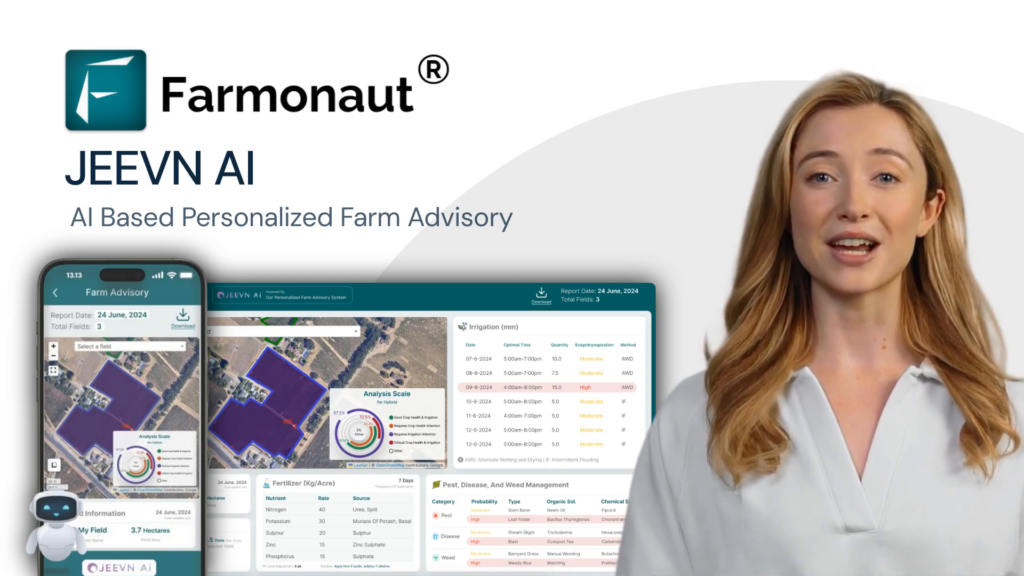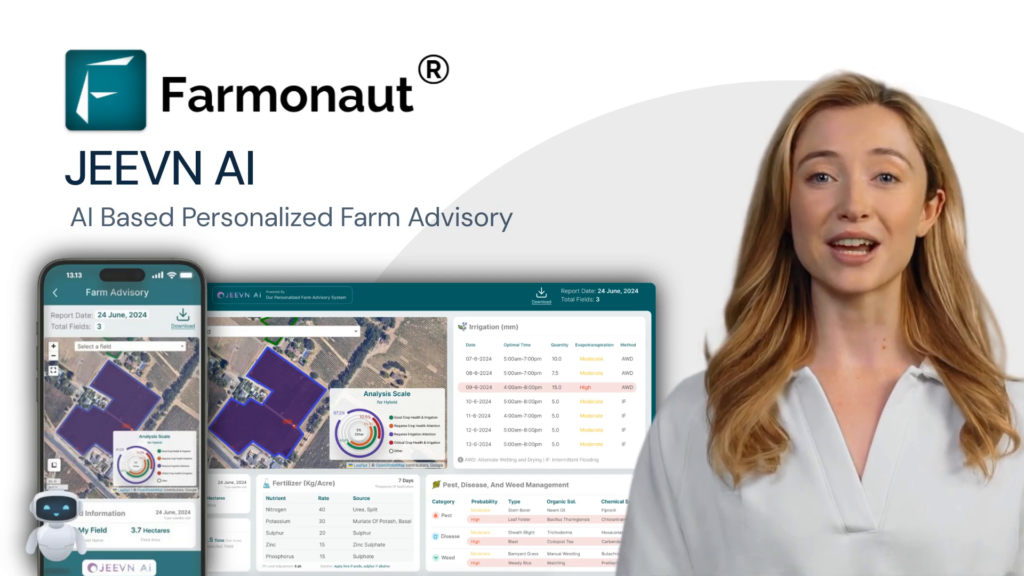Essential Field Scouting Techniques for Illinois Farmers: Maximize Corn Yields with Precision Agriculture Technology

“Illinois farmers using precision agriculture technology can potentially increase corn yields by up to 20% through optimized field management.”
As we approach the 2024 growing season, Illinois farmers face a myriad of challenges in maximizing their corn yields. Field scouting techniques and corn disease management have become more crucial than ever before. In this comprehensive guide, we’ll explore the essential strategies for pre-harvest field assessment, addressing nitrogen deficiency in crops, and combating rising insect pressure in agriculture. Our focus will be on empowering farmers with the knowledge and tools they need to optimize their crop yield and embrace sustainable farming practices.
The Importance of Field Scouting in Modern Agriculture
Field scouting is the cornerstone of successful crop management. It involves systematically observing, identifying, and analyzing crop health, pest presence, and overall field conditions. For Illinois farmers, especially those growing corn, regular scouting is essential for making informed decisions throughout the growing season.
- Early detection of potential issues
- Timely implementation of management strategies
- Optimized resource allocation
- Improved crop yield and quality
By incorporating advanced precision agriculture technology, such as Farmonaut’s satellite-based monitoring tools, farmers can enhance their scouting efforts and gain valuable insights into their fields’ health and productivity.
Key Diseases to Watch for in Illinois Corn Fields
As we delve into the specifics of field scouting techniques, it’s crucial to understand the primary diseases that pose threats to corn crops in Illinois. Two diseases that have been particularly concerning in recent years are gray leaf spot and tar spot.
Gray Leaf Spot
Gray leaf spot is a fungal disease that can significantly impact corn yields if left unchecked. It thrives in humid conditions and can spread rapidly through a field.
- Symptoms: Rectangular lesions on leaves, starting grayish-brown and turning tan
- Scouting: Begin checking lower leaves in mid to late season
- Management: Choose resistant hybrids, practice crop rotation, and consider fungicide applications
Tar Spot
Tar spot is a relatively new disease in Illinois but has quickly become a significant concern for corn growers.
- Symptoms: Small, raised black spots on leaves and husks
- Scouting: Monitor fields regularly, especially during periods of high humidity
- Management: Select tolerant hybrids, adjust planting dates, and use fungicides when necessary
Addressing Nitrogen Deficiency in Corn Crops
Nitrogen is a critical nutrient for corn growth and development. Recognizing and addressing nitrogen deficiency is essential for maintaining healthy crops and maximizing yields.
- Symptoms of nitrogen deficiency:
- Yellowing of lower leaves, starting at the tip and moving along the midrib
- Stunted growth and reduced vigor
- Smaller ears and reduced kernel size
- Scouting techniques:
- Regular visual inspections, particularly during key growth stages
- Use of chlorophyll meters or aerial imagery to assess plant health
- Soil and tissue testing for accurate nutrient levels
Farmonaut’s precision agriculture technology can be particularly helpful in identifying areas of nitrogen deficiency across large fields. By utilizing satellite imagery and AI-driven analysis, farmers can pinpoint specific areas that require additional nitrogen application, leading to more efficient use of resources and improved crop health.
Explore Farmonaut’s API for advanced crop monitoring
Combating Insect Pressure in Agriculture
Insect pressure poses a significant threat to corn crops, with aphids being a particular concern for Illinois farmers. Effective scouting and management strategies are crucial for minimizing damage and protecting yields.
Aphid Infestations
- Scouting techniques:
- Inspect the underside of leaves, particularly in the upper canopy
- Look for clusters of small, soft-bodied insects
- Monitor for signs of honeydew or sooty mold
- Management strategies:
- Encourage natural predators through habitat conservation
- Use insecticide-treated seeds or foliar insecticides when thresholds are reached
- Consider planting resistant hybrids
“Proper hybrid selection can reduce the risk of crop loss from diseases like gray leaf spot by up to 30% in challenging growing seasons.”
By utilizing Farmonaut’s satellite-based monitoring tools, farmers can track the spread of insect infestations across their fields and make data-driven decisions on when and where to apply control measures.
The Role of Hybrid Selection in Risk Management
Choosing the right corn hybrid is a critical decision that can significantly impact a farm’s resilience to various pressures. As we look towards the 2024 growing season, it’s essential to consider how different hybrids have performed under various stress conditions.
- Factors to consider in hybrid selection:
- Disease resistance, particularly to prevalent threats like gray leaf spot and tar spot
- Drought tolerance
- Insect resistance
- Yield potential under varying conditions
Farmers should work closely with their agronomists and seed suppliers to identify hybrids that have demonstrated strong performance in Illinois conditions. Additionally, utilizing precision agriculture technology can help track the performance of different hybrids across various field conditions, informing future planting decisions.
Pre-Harvest Field Assessment: A Crucial Step
As the growing season progresses, conducting thorough pre-harvest field assessments becomes increasingly important. These assessments help farmers estimate crop sizes, prioritize harvesting schedules, and plan for the next season.
- Key components of pre-harvest assessment:
- Stalk strength evaluation
- Ear size and fill assessment
- Disease presence and severity
- Overall plant health and maturity
Precision agriculture tools, like those offered by Farmonaut, can provide valuable data to supplement in-field observations. Satellite imagery can help identify areas of potential concern, allowing farmers to focus their ground-level assessments more efficiently.
Stalk Rot: A Silent Threat to Corn Yields
Stalk rot is a significant concern for corn farmers, as it can lead to lodging and harvest losses. Early detection and management are crucial for minimizing its impact.
- Symptoms to watch for:
- Discoloration at the base of the stalk
- Softening or hollowing of the lower internodes
- Premature plant death or leaf dieback
- Prevention strategies:
- Maintain balanced soil fertility
- Choose hybrids with good stalk strength
- Manage insect and disease pressures
- Consider fungicide applications in high-risk situations
Farmonaut’s satellite-based monitoring can help identify areas of potential stalk rot by detecting changes in plant health and vigor across the field. This allows farmers to target their scouting efforts and implement management strategies more effectively.

Leveraging Precision Agriculture Technology for Crop Yield Optimization
In today’s modern farming landscape, precision agriculture technology plays a pivotal role in maximizing crop yields and promoting sustainable farming practices. Tools like Farmonaut’s satellite-based monitoring system offer farmers unprecedented insights into their fields’ health and productivity.
- Benefits of precision agriculture:
- Real-time crop health monitoring
- Early detection of stress factors
- Optimized resource allocation
- Data-driven decision making
By integrating precision agriculture technology into their field scouting routines, Illinois farmers can gain a comprehensive understanding of their crops’ performance and make informed management decisions throughout the growing season.
Sustainable Farming Practices for Long-Term Success
As we look to the future of agriculture in Illinois, embracing sustainable farming practices is not just an environmental imperative but also a key to long-term economic success. By implementing techniques that preserve soil health, conserve water, and reduce chemical inputs, farmers can ensure the continued productivity of their land for generations to come.
- Key sustainable practices:
- Crop rotation to break disease cycles and improve soil health
- Cover cropping to prevent erosion and enhance soil organic matter
- Precision application of fertilizers and pesticides
- Conservation tillage to preserve soil structure
Farmonaut’s technology supports these sustainable practices by providing detailed insights into field conditions, allowing for more precise and efficient resource management. By leveraging this data, farmers can reduce their environmental impact while maintaining or even improving crop yields.
Access Farmonaut’s API Developer Docs for advanced integration
Preparing for the 2024 Growing Season: A Comprehensive Approach
As Illinois farmers look ahead to the 2024 growing season, a comprehensive approach to field management will be crucial for success. This involves integrating the latest scouting techniques, leveraging precision agriculture technology, and implementing sustainable farming practices.
- Key steps for preparation:
- Review and analyze data from previous seasons
- Develop a detailed scouting calendar
- Invest in precision agriculture tools and training
- Consult with agronomists on hybrid selection and management strategies
- Plan for potential challenges, including disease and insect pressures
By taking a proactive and data-driven approach to field management, Illinois farmers can position themselves for success in the face of evolving agricultural challenges.
Corn Disease and Pest Management Guide for Illinois Farmers
| Disease/Pest | Symptoms | Scouting Techniques | Management Strategies |
|---|---|---|---|
| Gray Leaf Spot | Rectangular lesions on leaves, grayish-brown to tan | Check lower leaves mid to late season | Resistant hybrids, crop rotation, fungicide application |
| Tar Spot | Small, raised black spots on leaves and husks | Regular monitoring, especially in humid conditions | Tolerant hybrids, adjusted planting dates, fungicides |
| Stalk Rot | Discoloration at stalk base, softening of lower internodes | Push test, split stalks to check for discoloration | Balanced soil fertility, strong stalk hybrids, stress management |
| Aphid Infestation | Clusters of small insects, honeydew, sooty mold | Inspect underside of leaves, especially upper canopy | Natural predators, insecticide-treated seeds, resistant hybrids |
Embracing Technology for Better Farm Management
As we’ve explored throughout this guide, technology plays a crucial role in modern agriculture. Farmonaut’s suite of tools offers Illinois farmers powerful capabilities for monitoring and managing their corn crops.
- Key features of Farmonaut’s technology:
- Satellite-based crop health monitoring
- AI-driven advisory systems
- Real-time weather data integration
- User-friendly mobile and web applications
By leveraging these advanced tools, farmers can make more informed decisions, optimize their resource use, and ultimately improve their crop yields and profitability.
Conclusion: Empowering Illinois Farmers for a Successful 2024 Season
As we look ahead to the 2024 growing season, Illinois corn farmers face both challenges and opportunities. By embracing essential field scouting techniques, leveraging precision agriculture technology, and implementing sustainable farming practices, farmers can position themselves for success.
Remember, effective crop management is an ongoing process that requires vigilance, adaptability, and a commitment to continuous learning. By staying informed about the latest agricultural trends, working closely with agronomists, and utilizing advanced tools like those offered by Farmonaut, Illinois farmers can maximize their corn yields and ensure the long-term sustainability of their operations.
Let’s work together to make the 2024 growing season the most productive and sustainable yet for Illinois agriculture!
FAQ Section
- Q: How often should I scout my corn fields?
A: It’s recommended to scout your fields at least once a week during the growing season, and more frequently during critical growth stages or when pest or disease pressure is high. - Q: What are the benefits of using satellite-based monitoring for crop management?
A: Satellite-based monitoring provides a comprehensive view of field health, allows for early detection of issues, helps optimize resource allocation, and supports data-driven decision-making. - Q: How can I integrate precision agriculture technology into my existing farming practices?
A: Start by exploring tools like Farmonaut’s platform, which offers user-friendly applications for crop monitoring. Gradually incorporate the insights gained from these tools into your decision-making process for tasks like irrigation, fertilization, and pest management. - Q: What are some key factors to consider when selecting corn hybrids?
A: Consider disease resistance, particularly to prevalent threats in your area, drought tolerance, insect resistance, and yield potential under varying conditions. Consult with local agronomists and seed suppliers for recommendations tailored to your specific growing conditions. - Q: How can sustainable farming practices improve my corn yields?
A: Sustainable practices like crop rotation, cover cropping, and conservation tillage can improve soil health, reduce pest and disease pressure, and enhance overall field productivity, leading to more consistent and potentially higher yields over time.
















